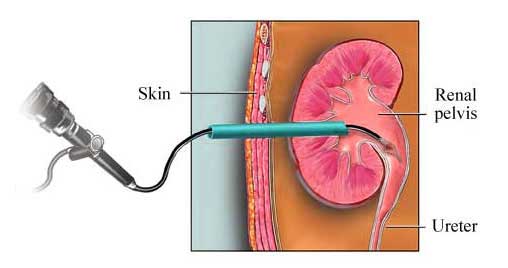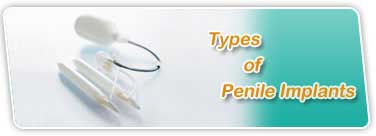Percutaneous Nephrolithotomy Surgery in India |
 |
Percutaneous nephrolithotomy is a uroradiologic system performed to concentrate stones from inside the kidney or proximal ureter by percutaneous surgery after the stones have been pictured radiologically.
Definition
Percutaneous nephrolithotomy, or PCNL, is a method for evacuating medium-sized or bigger renal calculi (kidney stones) from the patient's urinary tract by method for a nephroscope went into the kidney through a track made in the patient's back.The expression "percutaneous" implies that the methodology is done through the skin. Nephrolithotomy is a term shaped from two Greek words that signify "kidney" and "evacuating stones by cutting."
What does the procedure involve ?
Crumbling and extraction of kidney stones with a telescope put into the kidney through a little cut in the back. This as a rule incorporates cystoscopy and x-beam screening..
Who is a candidate for PCNL ?
While PCNL can be utilized to treat stones in any area and of any size, it is frequently held for the biggest and most complex stones:
Kidney stones treated with PCNL are typically bigger than 1.5 cm or can't be adequately treated with ESWL or ureteroscopy.
On event, littler stones might be dealt with by PCNL if there is a background marked by genuine disease or if the kidney is contorted.
If a nephrostomy tube has as of now been embedded for crisis waste, it might be utilized to finish PCNL treatment.
What should I expect before the procedure ?
On the off chance that you are taking Aspirin or Clopidogrel all the time, you should examine this with your urologist in light of the fact that these medications can bring about expanded seeping after surgery. There might be a parity of danger where halting them will diminish the odds of draining however this can bring about expanded thickening, which may likewise convey a danger to your wellbeing. This will, subsequently, require cautious exchange with respect to dangers and advantages.
What happens during the procedure ?
Regularly, a full broad analgesic will be utilized and you will be sleeping all through the methodology. You will generally be given injectable anti-infection agents before the strategy, in the wake of checking for any hypersensitivities.
Purpose
Calcium oxalate calculi. Around 80% of calculi found in patients in are shaped from calcium consolidated with oxalate, which is a salt framed from oxalic corrosive. A few sustenances, for example, rhubarb and spinach, are high in oxalic corrosive. Oxalic corrosive is likewise shaped in the body when vitamin C is separated. Oxalic corrosive is conventionally discharged through the pee yet might be invested in extensive sums because of perpetual pancreatic ailment or surgery including the small digestive tract.
Uric corrosive calculi. These stones create from precious stones of uric corrosive that structure in very acidic pee. Uric corrosive calculi represent around 5% of kidney stones. Furthermore, some kidney stones are a blend of calcium oxalate and uric corrosive gems.
Cystine calculi. Cystine calculi speak to around 2% of kidney stones. Cystine is an amino corrosive found in proteins that may shape hexagonal gems in the pee when it is discharged in over the top sums. Kidney stones made of cystine show that the patient has cystinuria, an innate condition in which the kidneys don't reabsorb this amino corrosive.
Struvite calculi. Struvite is a hard crystalline type of magnesium aluminum phosphate. Kidney stones made of this substance are framed in patients with urinary tract diseases brought about by specific sorts of microscopic organisms. Struvite calculi are otherwise called contamination calculi consequently.
Staghorn calculi. Staghorn calculi are substantial extended calculi made out of struvite. They are frequently examined independently in light of the fact that their size and shape confuse their expulsion from the urinary tract.
A few people are more probable than others to create renal calculi. Hazard components for kidney stones include:

Some people are more likely than others to develop renal calculi. Risk factors for kidney stones include : -
-
Male sex.
-
Family history. Having a first-degree relative with urolithiasis builds a man's danger of creating kidney stones.
-
Age more than 30.
-
Diet. Individuals whose eating regimen is high in protein or who eat sustenances rich in oxalate will probably create kidney stones.
-
Dehydration. Individuals who don't drink enough liquid every day to supplant what is lost through sweat and discharge deliver extremely focused pee. It is less demanding for precious stones to frame in amassed than in weaken pee, and to develop into kidney stones.
-
Metabolic scatters influencing the body's discharge of salt or its assimilation of calcium or oxalate. Most instances of urolithiasis in kids are identified with metabolic issue.
-
Intestinal sidestep surgery and ostomies. Individuals who have had these surgical strategies lose bigger than normal measures of water from the digestive tract.
What are the potential risks and complications ?
Problems identifying with the soporific:-, for example, a mid-section disease; profound vein thrombosis or DVT (blood clump in the legs); a pneumonic embolus (blood cluster in the lung); stroke; or heart assault.
Bleeding:- in or around the kidney. Some draining is typical; just once in a while (1%) is it substantial, requiring further treatment. You will see this seeping as you will pass blood in your pee.
|
 |
|
|
|





